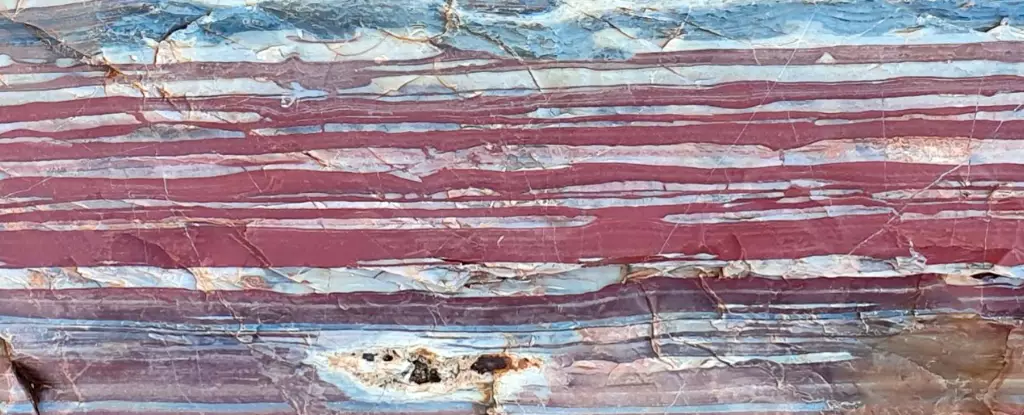In the depths of the oldest rocks on our planet lies a hidden narrative. Unveiled by earth scientists from the University of Western Australia and the University of Cambridge, the discovery of nanocrystals offers a profound insight into the emergence of life on Earth. These astonishing findings shed light on the formation of phosphorus as a fundamental building block of life and the intricate bonding process that led to the creation of primitive RNA at hydrothermal vents on the ancient seafloor. By analyzing 3.5-billion-year-old rocks from the Pilbara region in Western Australia under a transmission electron microscope, scientists have unearthed unexpected minerals that may rewrite the story of our origins.
A Geologic Time Capsule
Nestled in the heart of the Pilbara region, renowned for its remarkable preservation of the Earth’s crust during the Archean era when life first emerged, these rocks carry the secrets of prebiotic chemistry. On the surface, a trained eye perceives the Pilbara’s stripy red rock as a mixture of fine quartz and hematite, commonly known as jaspilite. However, closer investigation reveals a hidden treasure: nanocrystals with remarkable properties. Scattered throughout the jasper beds are fine particles of greenalite, a mineral composed of iron, silicon, and oxygen. These particles were once expelled from nearby hydrothermal vents, settling on the ancient seafloor billions of years ago. Geologist Birger Rasmussen from the University of Western Australia explains that “It’s amazing you can see nanoparticles in rocks so old, and part of the reason for that is they’re sealed in these relatively chemically inert materials.”
The Enigmatic Structure of Nanocrystals
At the nanoscale level, the structure of greenalite reveals its uniqueness. The edges of these particles are corrugated, a consequence of a misalignment in their crystal structure between the iron-rich octahedral layers and the silica-rich tetrahedral layers. This misalignment produces a series of parallel grooves that are the perfect size for molecules like RNA and DNA to align and bond. Rasmussen declares, “It produces a series of parallel grooves on the edges that are the perfect size for things like RNA and DNA.” These clay nanoparticles act as catalysts, facilitating the alignment of biomolecular components and enabling the formation of RNA. Billions of years ago, hydrothermal vents may have generated trillions of these microscopic clay particles, resembling assembly lines, concentrating RNA or pre-RNA. These vents have long been regarded as a probable cradle for life, offering an ideal environment for this crucial process. By continuously pumping seawater through magma chambers and emitting hot, nutrient-rich plumes into the ocean, hydrothermal vents create an exceptional niche for chemical reactions due to the extreme gradients they possess.
Contained within these 3.5-billion-year-old rocks from the Pilbara lies another astonishing element: fluorapatite. This mineral consists of oxygen, calcium, fluorine, and phosphorus. Scientists have long puzzled over the prevalence of phosphorus in various biological structures, including DNA, membranes, and lipids, despite its low concentration in the ocean. However, the presence of fluorapatite within the billion-year-old rocks offers a possible explanation. It suggests that hydrothermal vents may have served as an early source of accessible phosphorus. The researchers’ modeling indicates that the concentration of phosphorus in deep seawater 3.5 billion years ago might have been 10 to 100 times higher than it is today. Rasmussen proposes, “Why did life select phosphorus for so many essential biochemical processes, including the manufacture of genetic material when it is so scarce in the ocean today? The answer may be that phosphorus was much more abundant during the origin and early evolution of life.”
Through careful examination of ancient rocks untouched by time, scientists have unlocked an untold story—a chronicle that unravels the mysteries of life’s beginnings. The discovery of nanocrystals tucked away in the Pilbara’s red rocks provides a testament to the natural ingenuity of our planet. These crystals, formed through the ejection of iron-rich particles from hydrothermal vents, paved the way for the alignment of biomolecules like RNA and DNA. Moreover, the prevalence of phosphorus contained within these rocks suggests that hydrothermal vents were instrumental in furnishing life’s essential elements. The tales engraved within these rocks demonstrate the astounding power of our planet to produce conditions conducive to life. As we delve deeper into the secrets held by ancient rocks, we inch closer to understanding the origins of our existence.

Leave a Reply